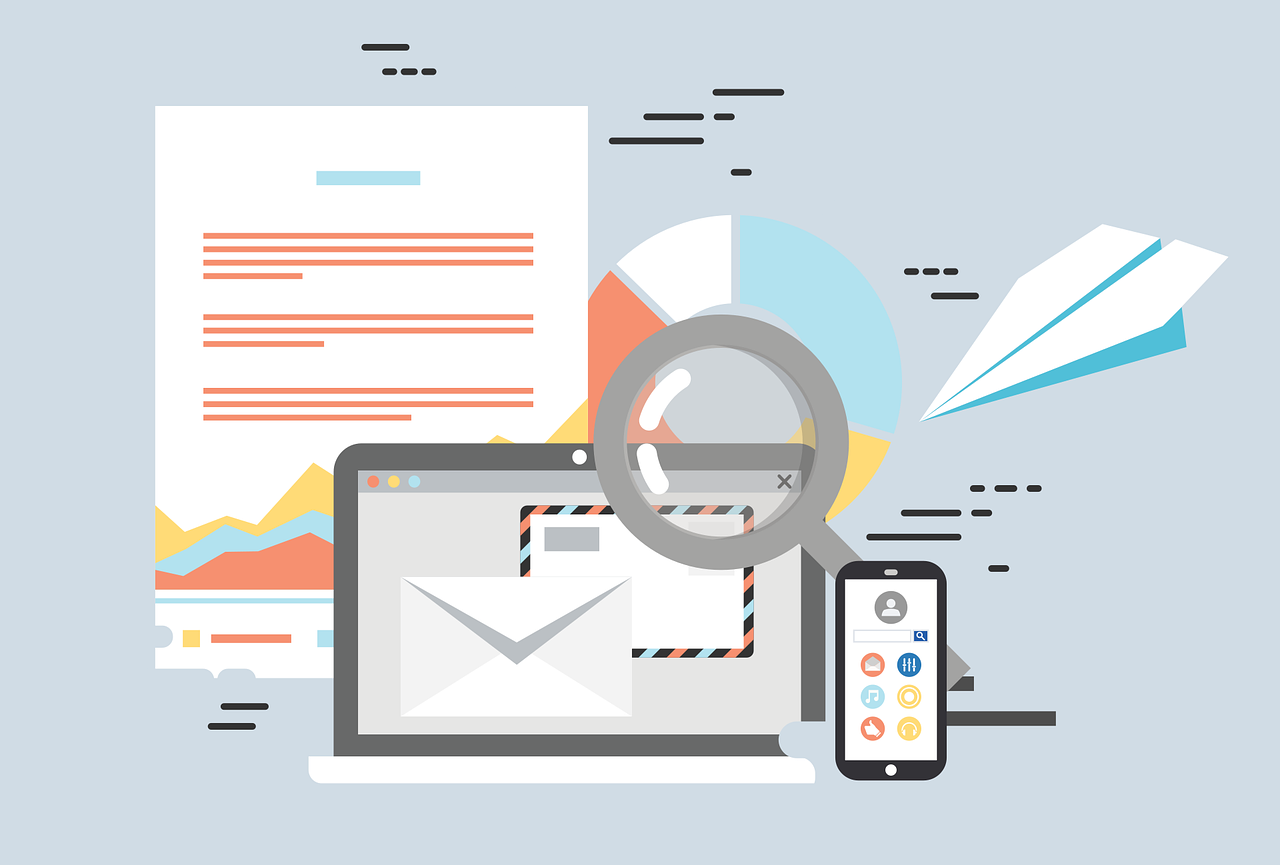Quiz on Email Marketing Fundamentals, Content Strategies, Automation, and Performance Optimization
Question 1:
Which of the following is a key component of a successful email marketing strategy?
- A) Sending the same email to all contacts
- B) Personalizing email content based on subscriber data
- C) Avoiding the use of call-to-action (CTA) buttons
- D) Limiting email frequency to once a year
Question 2:
What is the primary purpose of A/B testing in email marketing?
- A) To confirm your initial hypothesis without analyzing results
- B) To test multiple changes at once to save time
- C) To determine which version of an email achieves better performance on a specific metric
- D) To increase email sending costs
Question 3:
Which of the following metrics is NOT directly related to email performance optimization?
- A) Open rates
- B) Click-through rates (CTRs)
- C) Color scheme preferences
- D) Conversion rates
Question 4:
What role does email automation play in online retail?
- A) It decreases the efficiency of email campaigns.
- B) It allows for timely, personalized communication with customers based on specific triggers.
- C) It is used only for sending bulk emails to all subscribers.
- D) It eliminates the need for email marketing altogether.
Question 5:
How can segmenting your email list improve your email marketing efforts?
- A) By sending the same message to every subscriber, ensuring consistency
- B) By tailoring messages to meet the specific interests and needs of different audience segments
- C) By increasing the size of your email list automatically
- D) By making all your emails go to spam
Question 6:
Which of the following is a best practice for crafting email subject lines?
- A) Using all caps to grab attention
- B) Making them as vague as possible
- C) Including the recipient’s name for personalization
- D) Keeping them longer than the email body
Question 7:
Why is it important to include a clear and compelling call-to-action (CTA) in your emails?
- A) To confuse the reader about the next steps
- B) To decrease the click-through rate
- C) To guide recipients towards a desired action, such as visiting a website or making a purchase
- D) CTAs have no impact on email performance
Question 8:
GDPR compliance in email marketing is important because it:
- A) Allows you to send unsolicited emails to anyone
- B) Protects the privacy and data of individuals, requiring consent before sending emails
- C) Is only applicable to companies based in the United States
- D) Encourages the use of purchased email lists
Answers
- B) Personalizing email content based on subscriber data
- C) To determine which version of an email achieves better performance on a specific metric
- C) Color scheme preferences
- B) It allows for timely, personalized communication with customers based on specific triggers.
- B) By tailoring messages to meet the specific interests and needs of different audience segments
- C) Including the recipient’s name for personalization
- C) To guide recipients towards a desired action, such as visiting a website or making a purchase
- B) Protects the privacy and data of individuals, requiring consent before sending emails
Short-Answer Questions on Personalization and Segmentation in Email Marketing
Question 1
How can an online retailer use segmentation to improve the effectiveness of its email marketing campaigns for a seasonal sale?
Question 2
Describe a method for personalizing email content that goes beyond using the recipient’s first name. How can this method enhance the customer experience?
Question 3
What are some key data points an online retailer should collect for effective email list segmentation? Explain how these data points can be used to tailor email marketing messages.
Question 4
How can an online retail brand implement dynamic content in its email marketing strategy? Provide an example of how dynamic content can be used to increase email engagement.
Question 5
Explain the role of behavioral segmentation in email marketing. How can it benefit an online store specializing in fitness equipment?
Sample Answers
Answer 1
An online retailer can use segmentation based on past purchase behavior, geographical location, and engagement levels to tailor its seasonal sale email campaigns. For example, customers who purchased summer gear last year can receive targeted emails featuring new arrivals or discounts on similar items. Segmenting by location allows the retailer to promote weather-appropriate products, enhancing relevance and response rates.
Answer 2
Beyond using the recipient’s name, personalization can include recommending products based on past purchases or browsing history. This method enhances the customer experience by making emails feel tailored to the individual’s interests, potentially increasing conversion rates. For instance, sending an email with a curated selection of accessories that complement a recently purchased dress creates a personalized shopping experience.
Answer 3
Key data points for segmentation include purchase history, product preferences, engagement with previous emails (open and click-through rates), and demographic information (age, gender, location). This data can be used to tailor messages, such as sending targeted promotions for products similar to those previously purchased or customizing content to match demographic interests, thereby increasing the relevance and effectiveness of the campaigns.
Answer 4
An online retail brand can implement dynamic content by including items in the email that change based on the recipient’s behavior or profile. For example, dynamic content can showcase recently viewed products or items left in the cart at the top of the email, reminding the customer of what caught their interest and encouraging them to complete the purchase, thereby increasing engagement and potential sales.
Answer 5
Behavioral segmentation involves categorizing customers based on their actions, such as purchase patterns, email interactions, and website behavior. For an online store specializing in fitness equipment, this can identify customers interested in specific types of equipment (e.g., weights vs. cardio machines) or those who regularly purchase nutritional supplements. Tailoring emails to these behaviors, such as sending workout tips for purchased equipment or special offers on favorite supplements, enhances relevance and customer satisfaction.
These questions and answers demonstrate the critical role of personalization and segmentation in creating effective, customer-centric email marketing campaigns that resonate with recipients and drive engagement and conversions for online retailers.
Group Project Presentation: Email Campaign for “BookLovers Haven” Online Store
Objective
Our group project focuses on developing a comprehensive email marketing campaign for “BookLovers Haven,” a hypothetical online bookstore specializing in rare and collectible books.
The campaign aims to engage existing customers, attract new subscribers, and ultimately increase sales.
Rationale
Given the niche market of rare and collectible books, our strategy emphasizes personalization and targeted segmentation to appeal to specific interests within the book-loving community.
Recognizing the diverse preferences of our audience, from genre aficionados to collectors of rare editions, our campaign is designed to cater to these varied interests effectively.
Targeted Audience Segmentation
-
Segmentation Strategy:
- Genre Enthusiasts: Subscribers segmented by preferred book genres (e.g., mystery, historical fiction, sci-fi).
- Collectors: Customers identified by past purchases of limited editions or rare books.
- New Subscribers: Recently joined subscribers who haven’t made their first purchase.
-
Segmentation Goals:
- To provide personalized recommendations and content that resonate with each segment’s interests.
- To introduce new subscribers to the breadth of the bookstore’s offerings, encouraging exploration and first purchases.
Content Strategy
- For Genre Enthusiasts: Monthly newsletters featuring new arrivals, author spotlights, and genre-specific reading lists.
- For Collectors: Exclusive emails showcasing rare book acquisitions, auction announcements, and collector tips.
- For New Subscribers: A welcome series introducing BookLovers Haven’s unique value proposition, customer testimonials, and a one-time discount on the first purchase.
Automation Plan
- Welcome Series: Automated to send immediately after subscription, spaced over the first month to build engagement without overwhelming new subscribers.
- Abandoned Cart Reminders: Triggered 24 hours and then 72 hours after a cart is abandoned, offering assistance and highlighting the items left behind.
- Re-engagement Campaigns: Sent to subscribers who haven’t opened an email or made a purchase in the last six months, featuring a special offer to reignite interest.
Measurement of Success
-
Key Performance Indicators (KPIs):
- Open rates and click-through rates (CTRs) to assess engagement.
- Conversion rates from email campaigns to monitor sales impact.
- Growth in subscriber numbers and reduction in unsubscribe rates.
-
A/B Testing:
- Conduct A/B tests on subject lines and CTA designs to optimize for higher open rates and conversions.
-
Analytics and Reporting:
- Use email marketing software analytics to track performance.
- Monthly review meetings to analyze results, identify trends, and adjust the strategy as needed.
Our email campaign for BookLovers Haven leverages targeted segmentation and personalized content to engage different types of book enthusiasts effectively.
By implementing a detailed automation plan and utilizing data-driven insights for continuous optimization, we aim to enhance customer engagement, increase sales, and grow the bookstore’s subscriber base.
Next Steps
- Finalize content and design for the initial set of emails.
- Set up the necessary automation workflows in the chosen email marketing platform.
- Launch the campaign and begin the first round of A/B testing on key email elements.














